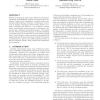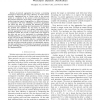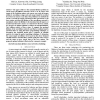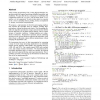21 search results - page 2 / 5 » Composition Techniques for Tree Communication Schedules |
APLAS
2004
ACM
14 years 26 days ago
2004
ACM
Modular programming enjoys many well-known advantages: readability, maintainability, separate development and compilation. However, the composition of modular units (components) s...
INFOCOM
2010
IEEE
13 years 5 months ago
2010
IEEE
—In-network aggregation has become a promising technique for improving the energy efficiency of wireless sensor networks. Aggregating data at various nodes in the network result...
EMSOFT
2006
Springer
13 years 11 months ago
2006
Springer
Distributed real-time systems require a predictable and verifiable mechanism to control the communication medium. Current real-time communication protocols are typically independe...
GLOBECOM
2009
IEEE
14 years 2 months ago
2009
IEEE
—The paper addresses the maximal lifetime problem in sensor-target surveillance networks. Given a set of sensors and targets in an Euclidean plane, each sensor can watch all targ...
TOG
2012
11 years 10 months ago
2012
Using existing programming tools, writing high-performance image processing code requires sacrificing readability, portability, and modularity. We argue that this is a consequenc...




